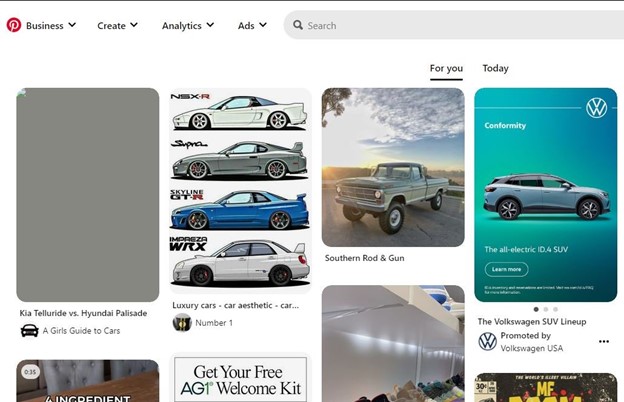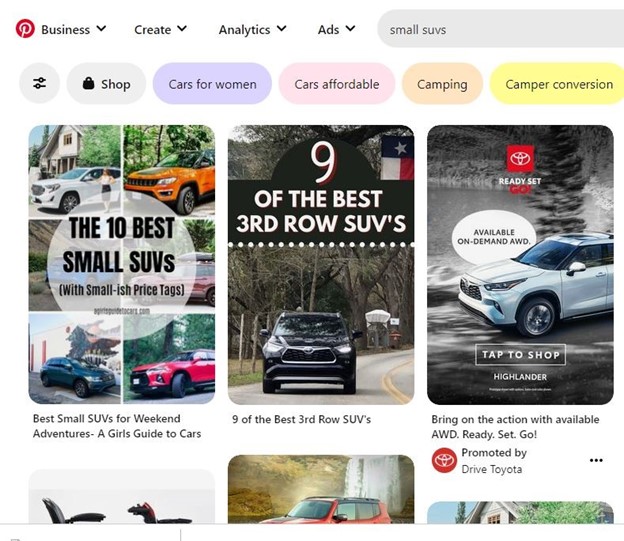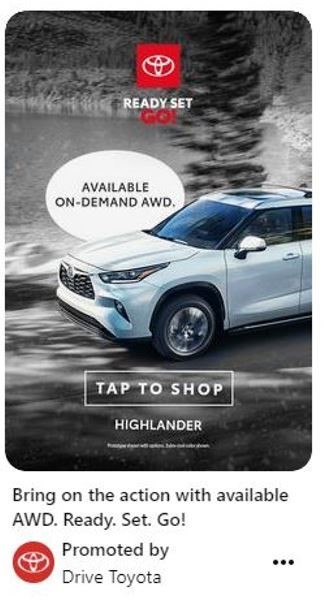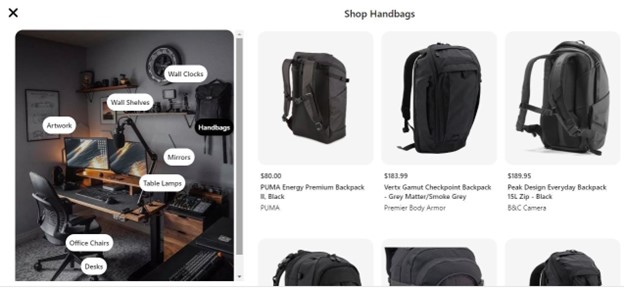Facebook went live in 2004. Twitter followed two years later, in 2006. The first ever Instagram post was in 2010, a few years before Meta purchased the company.
Do you know when Pinterest came out? That’s okay, me neither. Pinterest was made available to public users in 2012 after two years of growth as an invite-only beta platform, during which time the company received TechCrunch’s “Best New Start Up of 2011” Crunchie award.
I begin with this retrospective to emphasize that this platform is not as new as some of us may suspect. Perhaps the better word from an advertising perspective is uncapitalized.
The question we want to answer today is, “How can marketers capitalize on Pinterest better than ever?” Let’s dive in!
The What
Starting with the What – Pinterest could be better described as a visual search engine than a social media platform.
Each rectangle (see below) on Pinterest is called a Pin. A Pin is an image or video usually accompanied by text that expands on the idea. These Pins typically include a link to content outside of Pinterest. Display advertising has a distinct similarity: Show a compelling image that includes some text to help drive traffic to your digital property.

Pinterest’s unique functionality – their secret sauce – is that a Pinner’s “For You” content comes from their searches or saves on the platform–hence calling it a visual search engine. Pinterest is a platform where people want to see display advertising.

The Who
Pinners use this platform to get inspired toward action. According to Pinterest’s reports: 87% of weekly Pinners use Pinterest when actively considering products/services to purchase. Also, the platform reaches 52% of US adult internet users with a household income of over $100,000, including 3 out of 4 moms in the US.
Yes, you read that correctly! 87% of people on this platform want to be educated and persuaded toward a purchase.
The Why
I’ve already mentioned that Pinterest is a reach platform where people are not blind to advertising but seek inspiration to purchase. In simplest terms: this is a display advertising search engine where qualified shoppers actively seek to be persuaded and have no brand bias or affinity. 97% of searches on Pinterest are unbranded.
This makes Pinterest a relevant advertising opportunity, no matter your product or service.
Trust me, there is a Pinterest audience seeking your product, whether it’s:
- Best third-row SUVs
- Best in-state vacation ideas
- Recipes
- Low-budget fashion ideas
- Used Cars
- DIY anything
- and just about everything else!
The How
Companies advertise on Pinterest through “Promoted Pins.” These pins have the look and feel of other Pins but are paid for and targeted to specific searches. Let’s say you are a Ford dealership, and you want to help sell new F-150s. Maybe you want to think outside the box, so you take photos of F-150 towing campers or some ‘lifestyle’ photos the OEM provides showing trucks in the mountains.
You develop a Promoted Pin campaign to demographically target Adults 25-54 who have interests in “camping,” “mountain biking,” and “hiking,” and serve these Pins with the text “find your adventure in an F-150 at X Dealership.”
Check out the example below from a “best 3rd row SUV” search.

Pinterest is a full funnel platform. Companies can build awareness, consideration, and conversion campaigns, running all three concurrently to assist people through the shopping funnel.
Awareness ads plant the seed: “Imagine how this product/service will help you live the life of your dreams.”
Consideration ads include more compelling messages, such as payment options for vehicles or destination locations for hotels/airlines – driving clicks to deep links of inventory and offers.
Finally, Shopping ads allow you to connect inventory to a Pinterest Catalogue and directly list and sell products through 3rd party integrations like Shopify.

In many ways, Pinterest was ahead of its time in 2012. The platform has grown to 84M users in the US (JAN 2023 – Statista). Online consumer sentiment toward personalized advertising has grown favorably, and online retail has never been more prevalent. Pinterest is a platform where people are actively looking to receive messages that inspire them to make purchases.
Plainly put, Pinterest provides advertisers with a platform where their ads are not only endured but well received. Which should be music to all our ears.
Now that you know a bit about what opportunities Pinterest can offer, how will you capitalize on it?

